


In hexagonal close-packed crystals, deformation twinning is another important deformation mechanism due to the restricted number of active slip systems. The generation and evolution of twinning as well as its interactions with dislocations dictate the strength, ductility, and fracture of the materials. We use molecular dynamics, crystal plasticity, and density functional theory to investigate the twinning process in Mg, Ti, and Zr.
Students: Amir and Jamie
Funding source: NSF
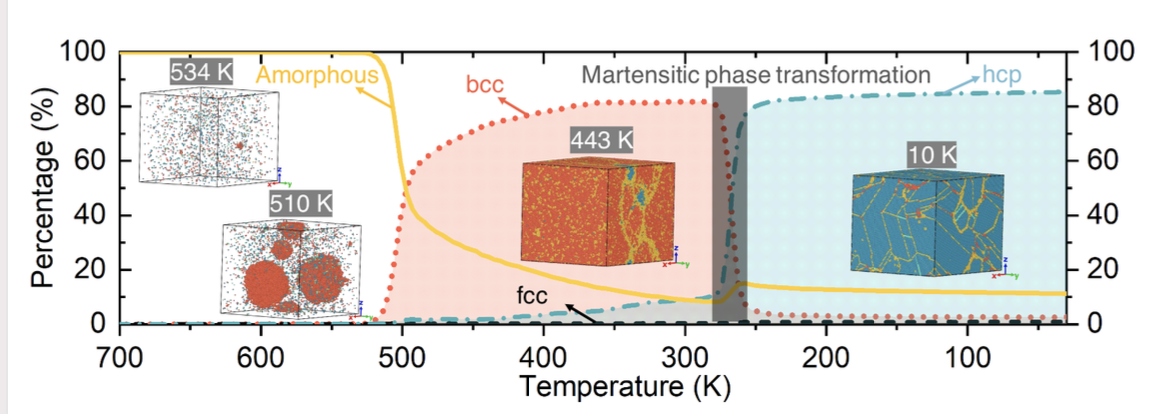
Laser processing involves ultrafast thermal transient and steep temperature gradient, which will significantly impact the mechanical properties of the structural components. We are using molecular dynamics, phase-field modeling, and density functional theory to investigate the microstructure evolution under these extreme conditions and to predict the resulting material properties.
Students: Amir and Jamie
Funding source: NSF CBET
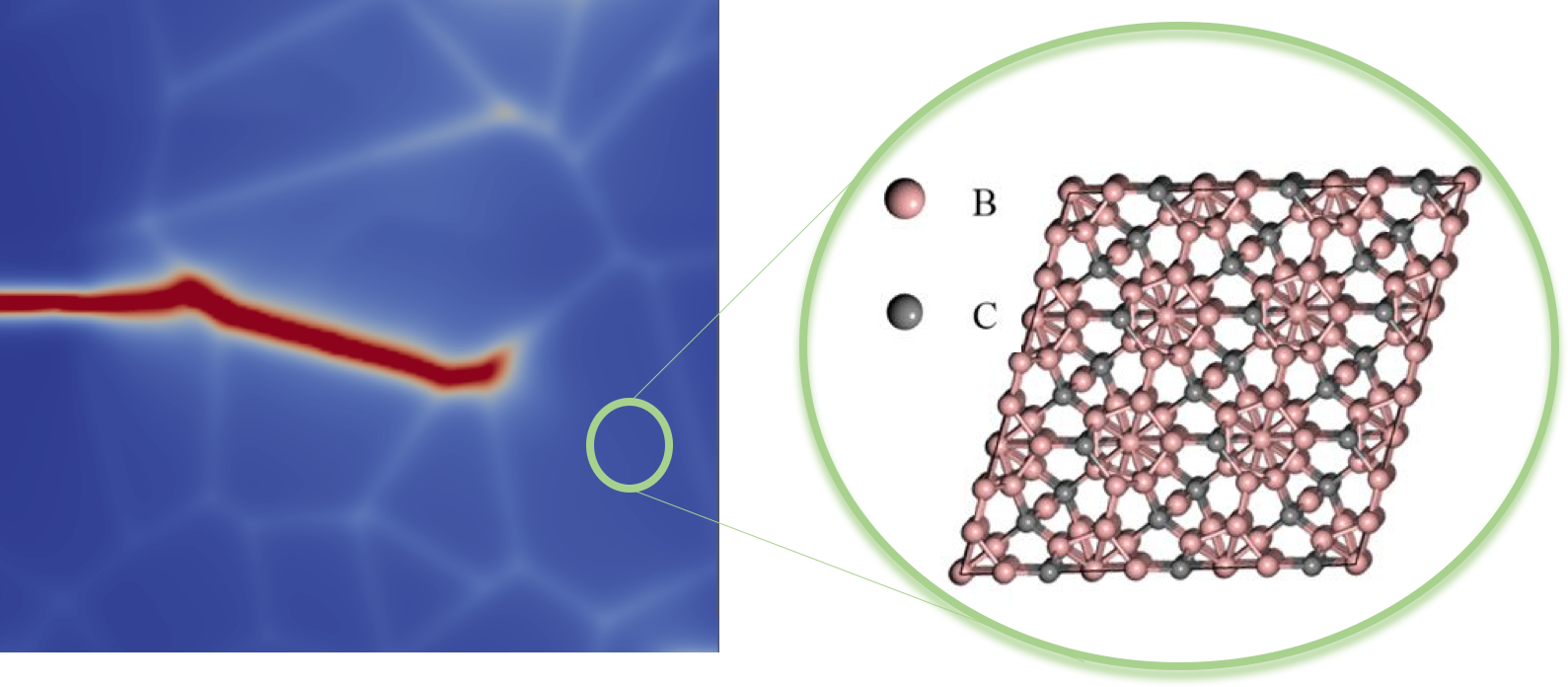
Boron carbide (B4C) is the third hardest material in the world. Its ultra-low density and superior hardness make it a promising candidate for body armor and advanced coating. However, its ductility, especially under high-speed impact, is very limited. We strive to understand the nucleation of amorphous bands and the brittle fracture in B4C using phase-field modeling. This project is funded by NSF!
Students: Ehsan and Jamie
Funding source: NSF CMMI
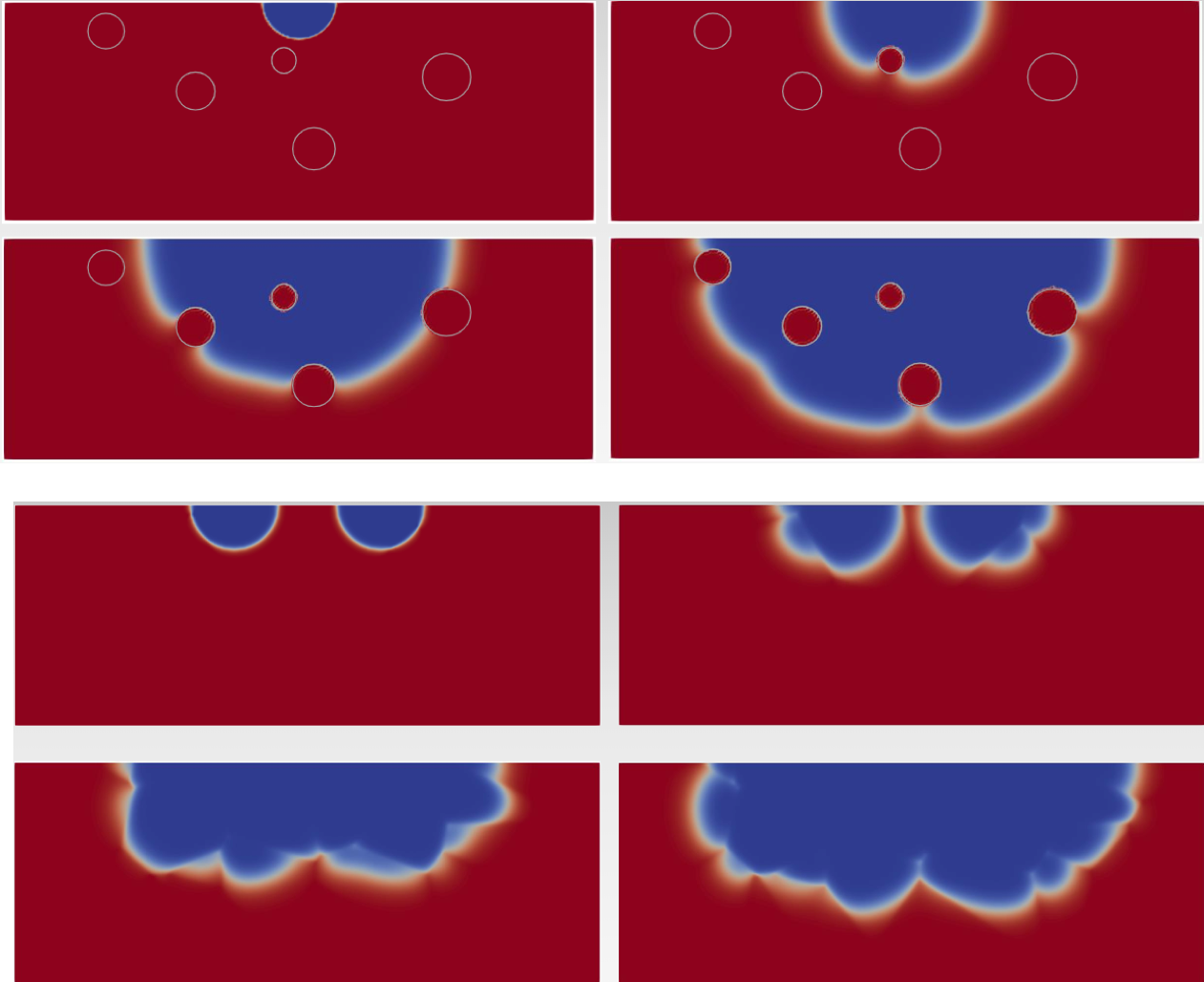
Alloys are the backbone of modern society. Alloys are designed with exceptional mechanical properties through appropriate chemical composition and advanced heat treatment. However, alloys suffer from extreme working environment such as high loading and harsh acidic condition, in which the resulting corrosion significantly compromises their mechanical properties. We strive to build a first-principles informed mesoscale phase-field model. The mesoscale simulations will elucidate the impact of alloy microstructures on the corrosion process and predict the mechanical properties of the alloy after corrosion.
Students: Mehrab
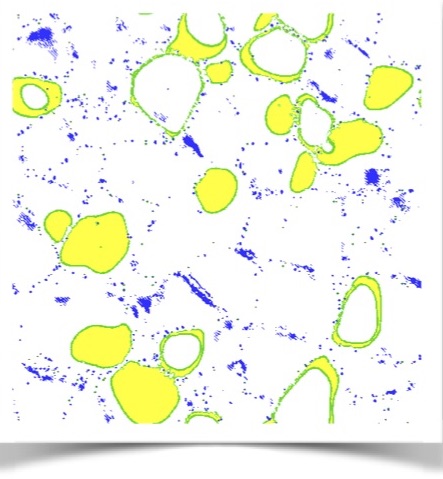
The generation and evolution of complex dislocation network dictate the strength, ductility, and fracture of metals and alloys. We strives to develop advanced phase-field dislocation dynamics approach, incorporating the evolution of dislocations and their interactions with other material defects such as grain boundaries and twinning. We aim to predict the defects evolution in materials and find engineering strategies to build strong and tough materials.
Students: Tengfei and Pranay
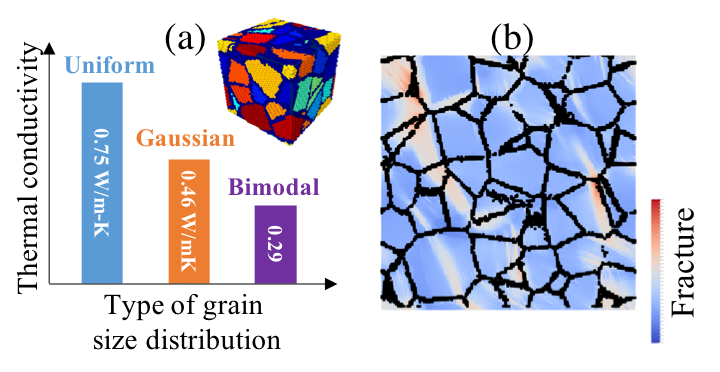
Thermoelectric (TE) materials can convert temperature differences to electricity that could be used in applications including power generation and refrigeration. Compared to regular power generation system, TE power generator offers more robust performance without complicated moving parts. High TE performance requires low thermal conductivity and high electron conductivity. In this project, we strive to use defect engineering (by introducing point defects, dislocations, grain boundaries, and twin bouneries) to acheive a two-fold aim: (1) scattering phonons to lower the thermal conductivity and enhance the TE properties; (2) increasing ductility and fracture touchness to enhance the structural robustness.
Students: Pranay